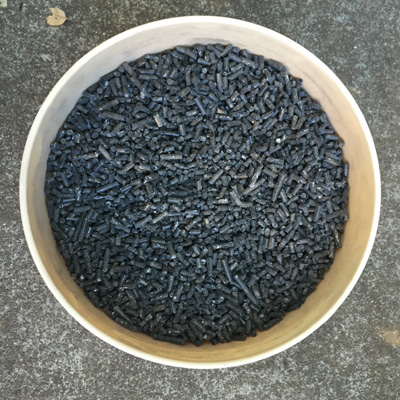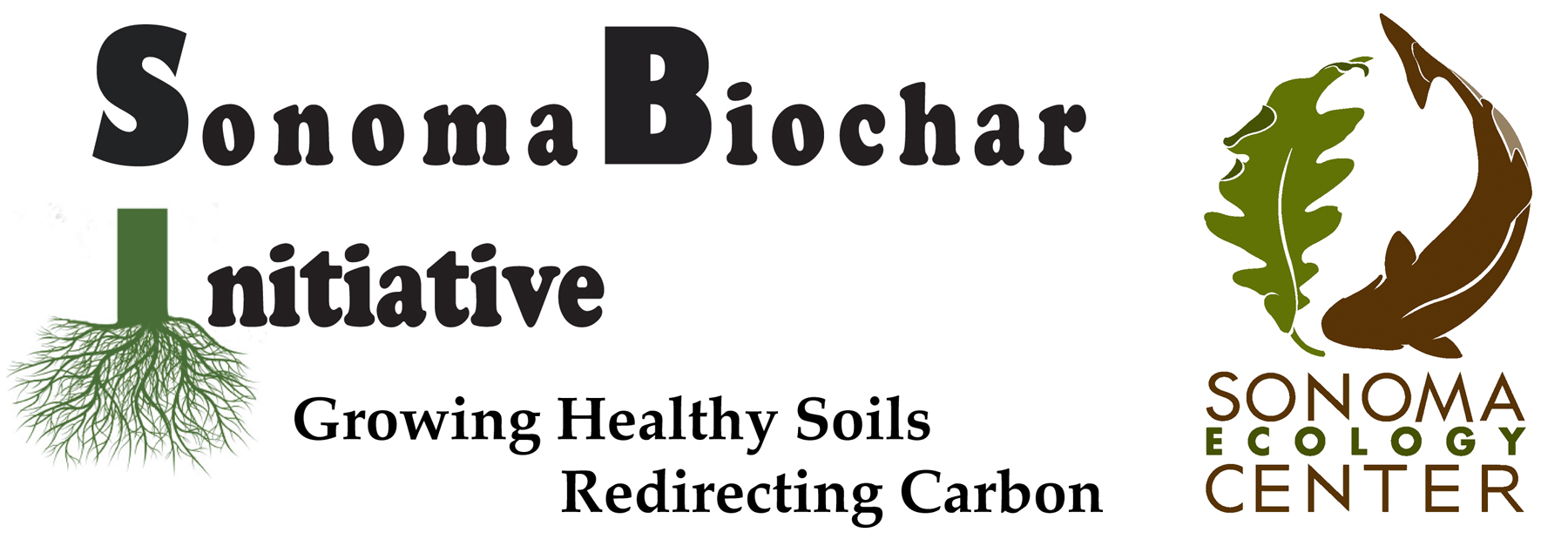Activities
The Sonoma Biochar Initiative has been incredibly active during the last 12 months working on a number of grant projects and conducting DIY biochar production trainings and we have found it difficult to post updates along the way. We are looking to add a part-time assistant to the program in the next few months that will allow us to stay more up-to-date.
Here are some links and photos for some of our activities and other valuable information:
Check out this great article profiling our ongoing Department of Water Resources Oasis vineyard field trial near King City, California.
Go here to view a webinar from the Redwood Forest Foundation on our North Coast Resource Partnership project in the Usal Forest. This grant was made possible using funds from the California Climate Investment Fund.
USBI hosted a fantastic Biochar Week event with lots of great presentations. Watch them here.
High school student Jon Parkman is an aspiring videographer who is also part of Sonoma Ecology Center’s EnviroLeader program. SBI recently held a flame-cap kiln demonstration at the park and he filmed the process, and together with his father Breck Parkman produced a short video about making biochar. We want to thank Jon, Breck, and the others that also contributed to this inspiring recording!
_________________________________________________________
We provided training to several farm managers and their staffs on the flame-cap kiln and conservation burn techniques:
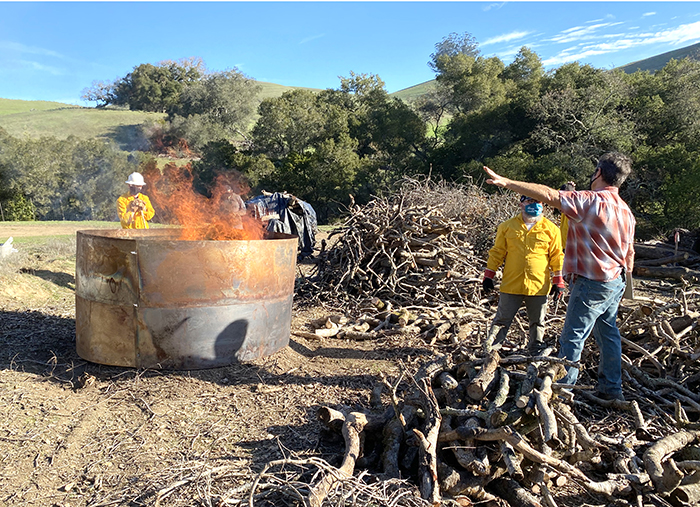
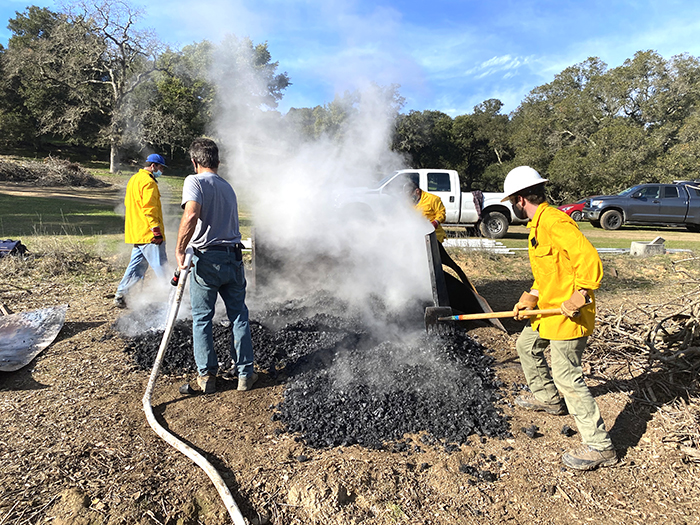
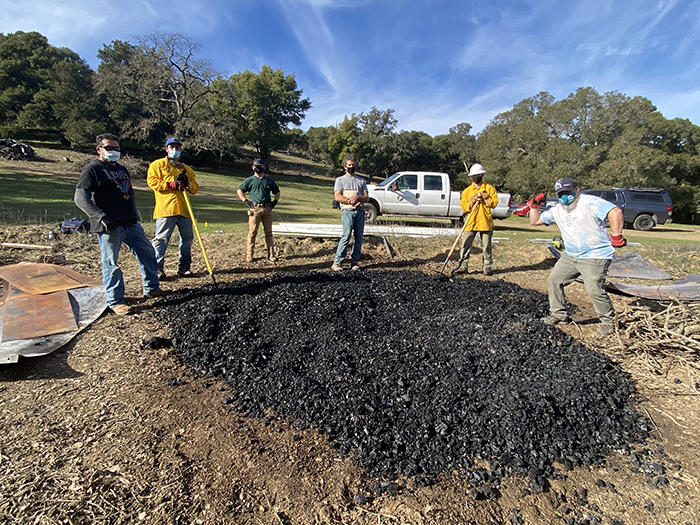
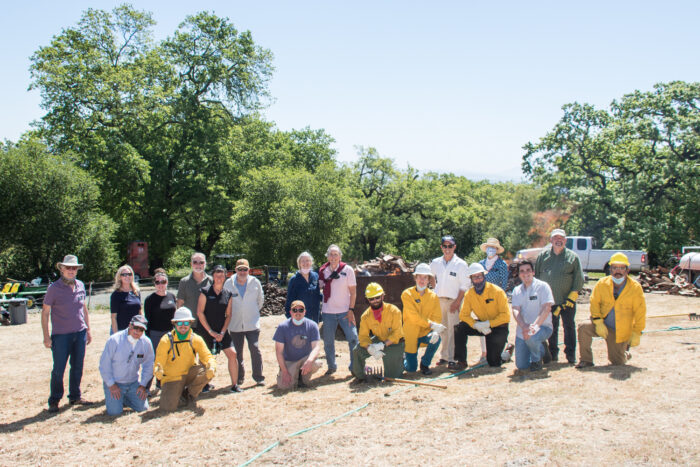
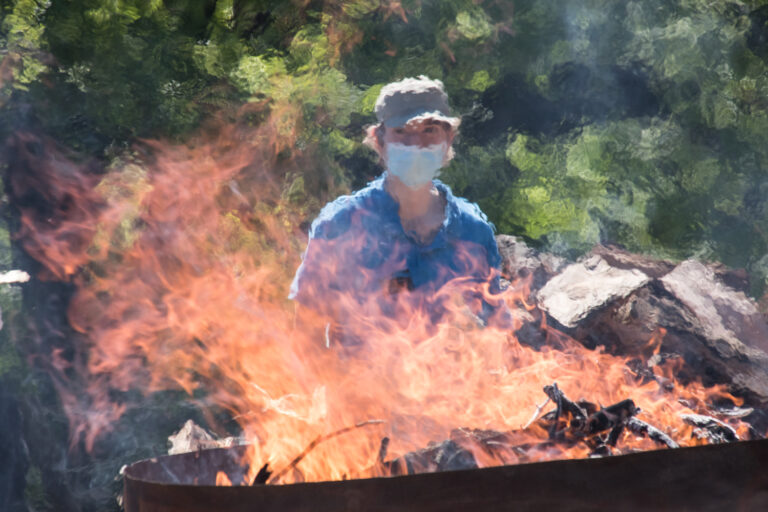
_________________________________________________
Pacific Biochar secures the first carbon credits for biochar in the U.S!
_________________________________________________
Scaling Biochar Forum Videos Available
The Sonoma Biochar Initiative, in association with the California Biochar Association and the Sonoma Ecology Center, produced a two-day educational webinar series in mid-October called the Scaling Biochar Forum. This forum was focused on what is needed to scale the developing biochar industry and featured 27 speakers from around the country representing science, industry, entrepreneurial, and policy perspectives. All of the 20 to 30-minute presentations are now available on the scalingbiochar.com website and you are encouraged to view or share them with others who may benefit from learning about this amazing natural climate solution that offers so many other benefits.
_________________________________________________
Department of Water Resources Grant Field Trial Results
A crack crew of grape harvesters from Monterey Pacific Vineyard Management led by soil scientist Doug Beck, along with Josiah Hunt of Pacific Biochar and Raymond Baltar of Sonoma Ecology Center/Sonoma Biochar Initiative, recently weighed grape cluster samples from the 16 blocks of the Department of Water Resources field trial testing biochar’s efficacy at saving water in a vineyard setting. Below are some photos from the harvest. A report on the impressive results from the harvest is now available here. The previous report on this field trial is available here.
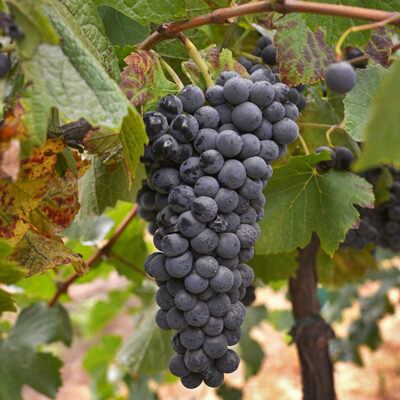
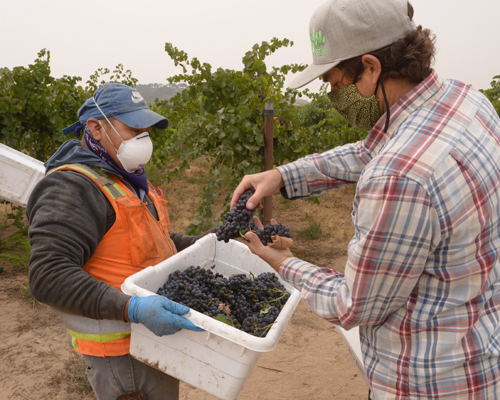


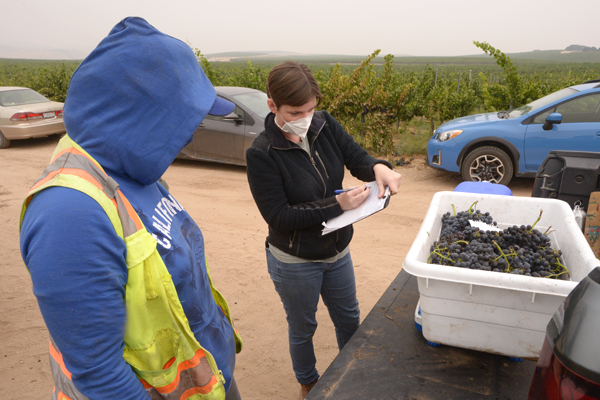
__________________________________________
Mobile Kilns Bring Biochar Production to Forest, Farm and Ranch
As the planet heats up, so does interest in practical, affordable and scalable methods for drawing carbon out of the atmosphere. This helps explain the growing popularity of biochar, a “super charcoal” that improves soil, conserves water and sequesters carbon all at once.
This summer, Sonoma Ecology Center’s Sonoma Biochar Initiative (SBI) is taking local biochar production to a new level with portable kilns—a mobile biochar kit that can help foresters, farmers and others manage their surplus biomass better while drawing carbon out of the atmosphere.
“How do you make biochar cheaply in the forest? This is how,” says Raymond Baltar, director of the Sonoma Biochar Initiative, which has been studying and promoting biochar production and use for years. Raymond’s expertise on the subject has resulted in grant projects, speaking engagements and even an appearance in a Leonardo diCaprio film on climate change.
Now, thanks to a grant from the North Coast Resource Partnership, SEC will obtain five “ring of fire” kilns—metal kilns about seven feet in diameter, designed by Oregon-based Wilson Biochar Associates for the purpose of easily turning forest slash and other organic material into biochar on site. Sonoma Biochar Initiative, in partnership with Redwood Forest Foundation, Inc., will utilize the kilns in the Usal Redwood Forest, and the Potter Valley Tribe will use them on forested property recently acquired from PG&E, to process forest slash there that otherwise would simply be burned in open piles.
The kilns will also be used at an alternative biomass processing technique demonstration event in Scott Valley (Siskiyou County) being organized by the Scott River Watershed Council, who will also be demonstrating the Tigercat Carbonator 500. This large-scale air-curtain-style biomass processor, owned by Sonoma County Forester Dan Falk, can process 15 to 20 tons of woody biomass per hour while also producing large amounts of high-quality biochar.
“There’s a lot of interest in these kilns and other alternate methods for processing forest slash,” Raymond says. After the grant is completed the Sonoma Biochar Initiative plans to “continue getting them out into the community,” he adds, by bringing them to farms, vineyards, ranches and other places where organic material is processed. Production and use of biochar will be further integrated into Sonoma Ecology Center’s restoration efforts as well.
If slash is burned or left to rot on the forest floor, “much of that material would otherwise degrade into CO2 over time,” Raymond explains. “While leaving organic material in the forest to degrade naturally is critical for a healthy forest ecosystem and should always be done as part of sustainable forestry activities, there is often an overabundance of this material created during fuels reduction activities, and the typical solution for dealing with it is burning in open piles.”
But by producing biochar instead, “We can save up to 50 percent of the carbon in the plant material that otherwise would reenter the atmosphere, and put it to good use right back in the forest or in nearby agricultural activities.”
The full mobile biochar kit includes a trailer to haul the kilns and other equipment, plus a water trailer to douse the flames at the right time. It also includes tools, fire-safe clothing, propane tanks, and “everything you would need as a landowner or forestry operation.” Training in the assembly and safe use of the kilns is also included in the grant project.
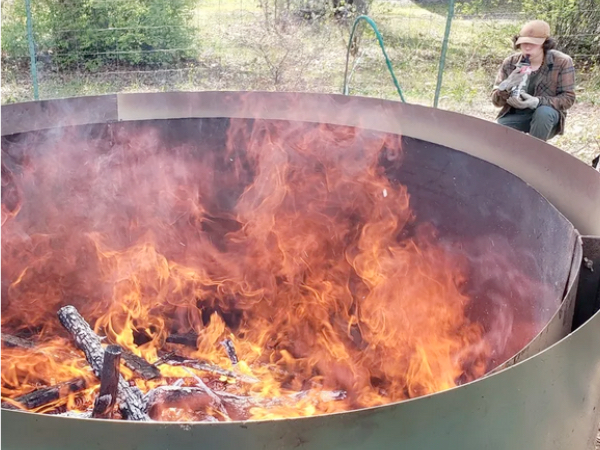
________________________________________________________
Sonoma Garden Park Biochar Pot Trials
SBI and Sonoma Ecology Center (SEC) are now conducting pot trials at the Sonoma Garden Park nursery with native trees using a biochar/compost blend compared to a control blend using compost and soil only. We’ll report back from time to time with photos of any differences that show up. Here are a few photos of our very own EnviroLeaders Jada Rosen (blue shirt) and Laura Vega from Sonoma High School assisting SEC restoration staff Garrett Gradillas and Sierra Reinertson, along with Jonny Elhers from our Education department.
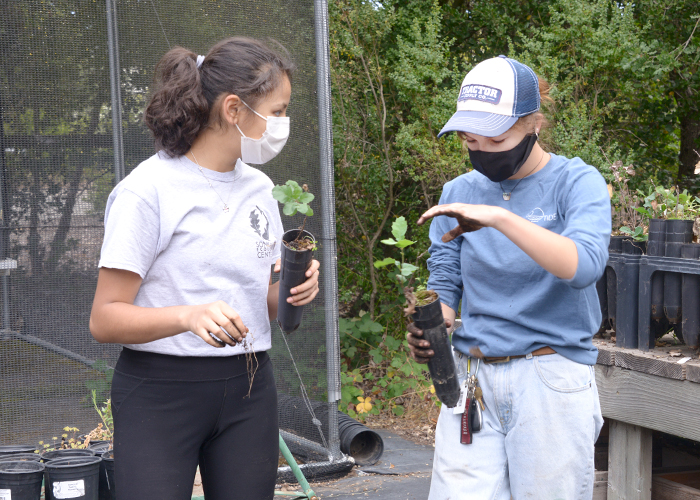
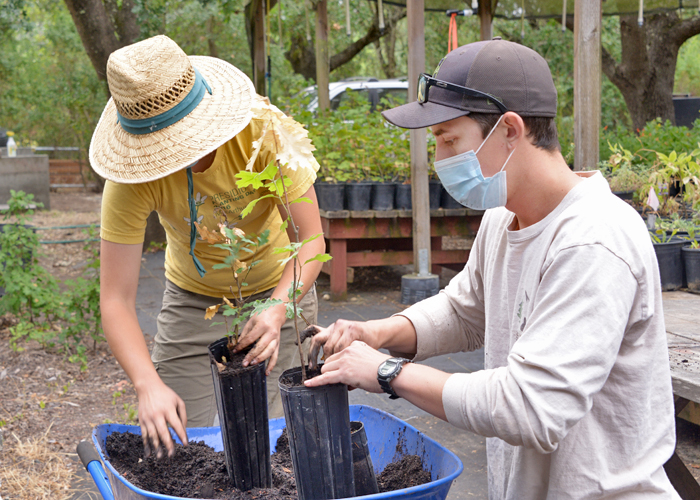
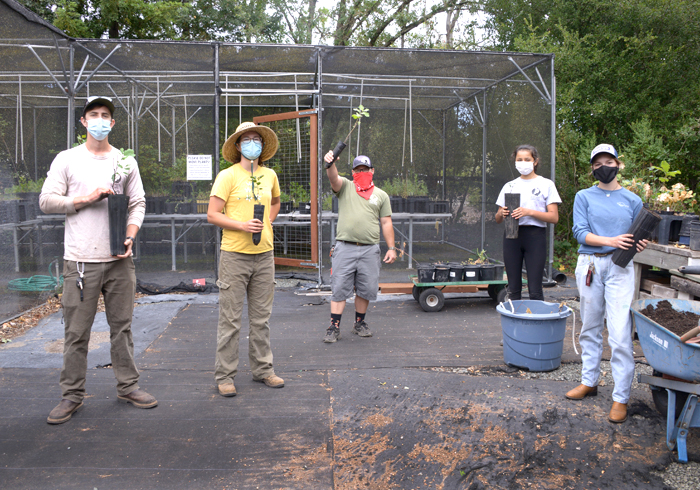
Important Biochar-Related Studies
Check out this study from the Nature Conservancy.
And this important study on getting to carbon neutral in California by 2045.
Biochar plays a part in the Natural Solutions recommendations.
_______________________________________________________
Important Biochar-Related Studies
We would like to thank Miguel Garcia and the other staff from the Napa RCD for a well planned and well conducted conservation burn training event. (The poppyseed cake was fantastic!) We would also like to thank Calmere Estate Winery for the use of their facility, Jackson Family Wines for the use of their vines and the help we received from their staff, and Charlie McIntosh from Pacific Biochar for co-presenting on the agronomic benefits of biochar and some preliminary results from our DWR grant project at the Oasis Vineyard in Monterey County.
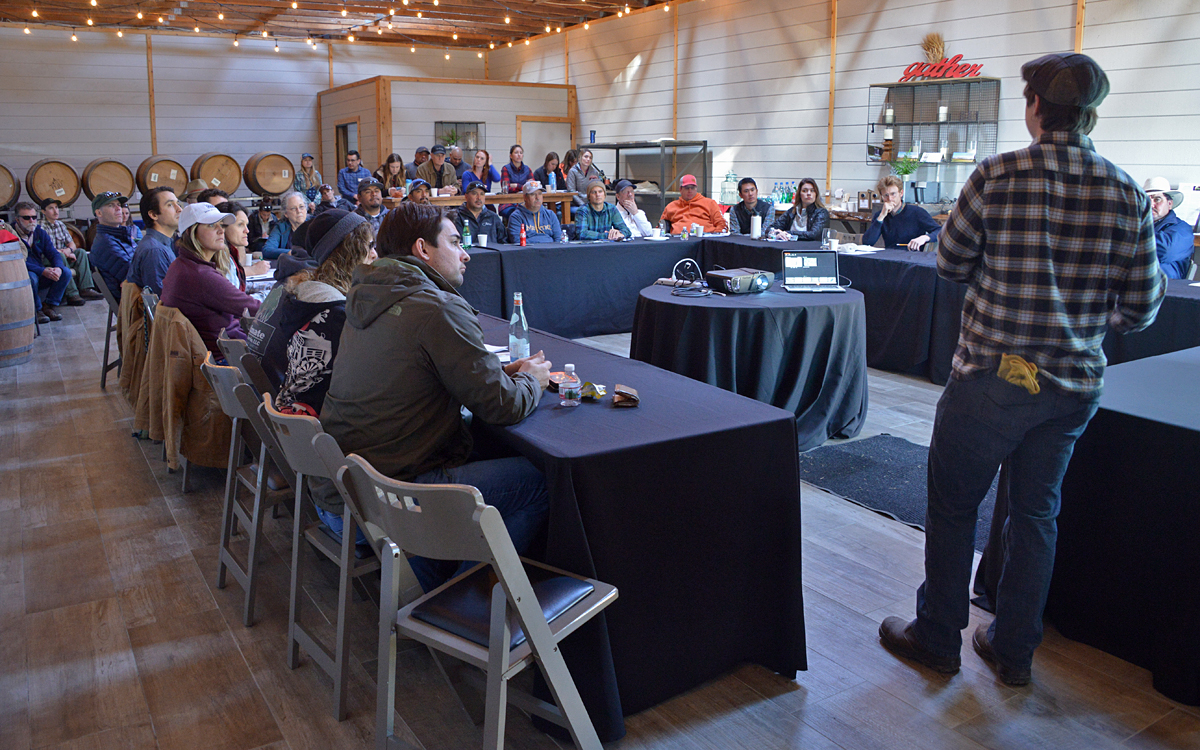
The Sonoma Biochar Initiative, The California Biochar Association, Pacific Biochar, and other partners, are promoting and seeking funding for three highly impactful, biochar-related initiatives: developing a carbon sequestration/carbon credit protocol for biochar through the Carbon Action Network; developing and hosting a national forum focused on scaling biochar production and use, specifically targeting the philanthropic and venture communies; and implementing a large-scale biochar “get it in the ground” project with a goal of sequestering 5000 tons of biochar in California farm and forestry soils over three years. Two of these projects would yield enormous benefits with relatively small investments, and the third would upcycle massive amounts of low-value, surplus biomass into renewable energy, biochar, and bio-oil. Any one of these projects would be game changers for the biochar community.
If you or someone you know is looking for a high-impact investment to help address the climate crisis, please
